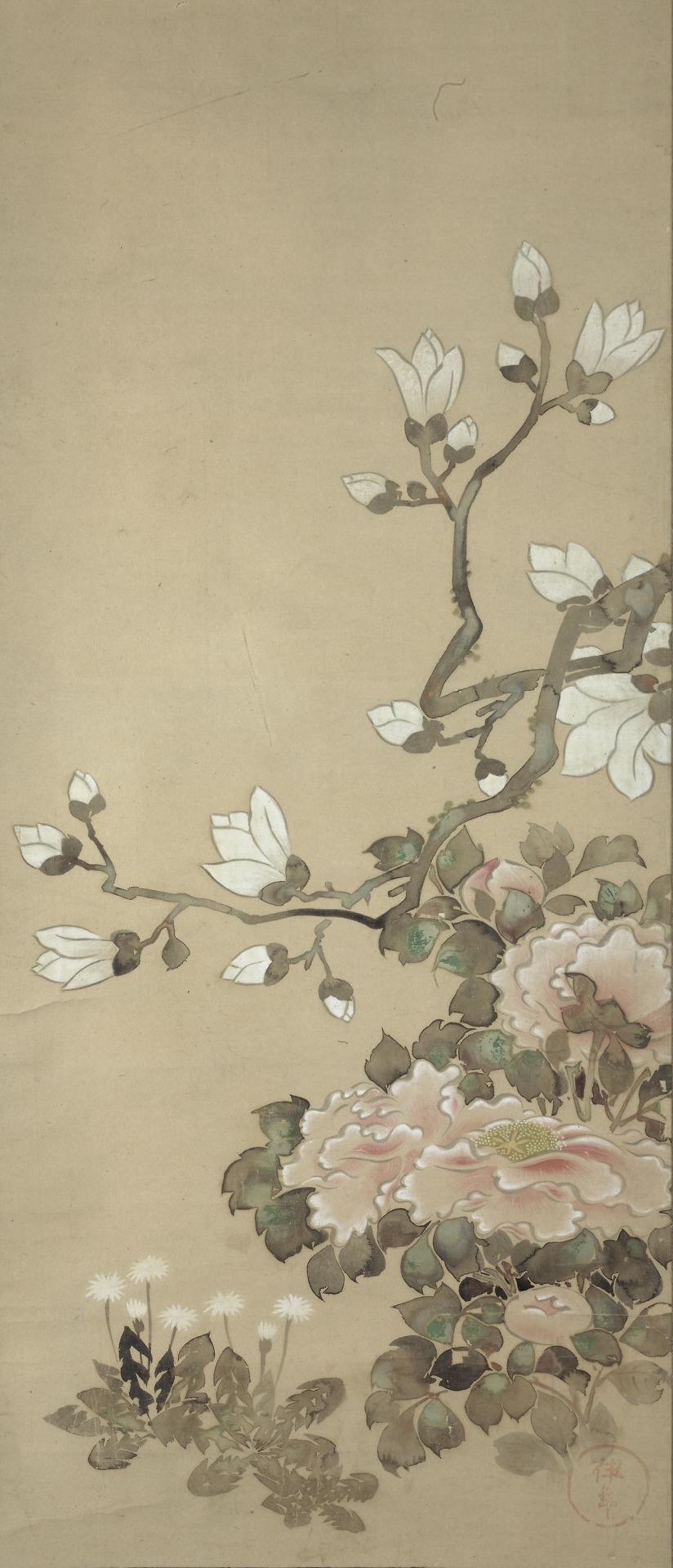#tawaraya sôtatsu
Photo
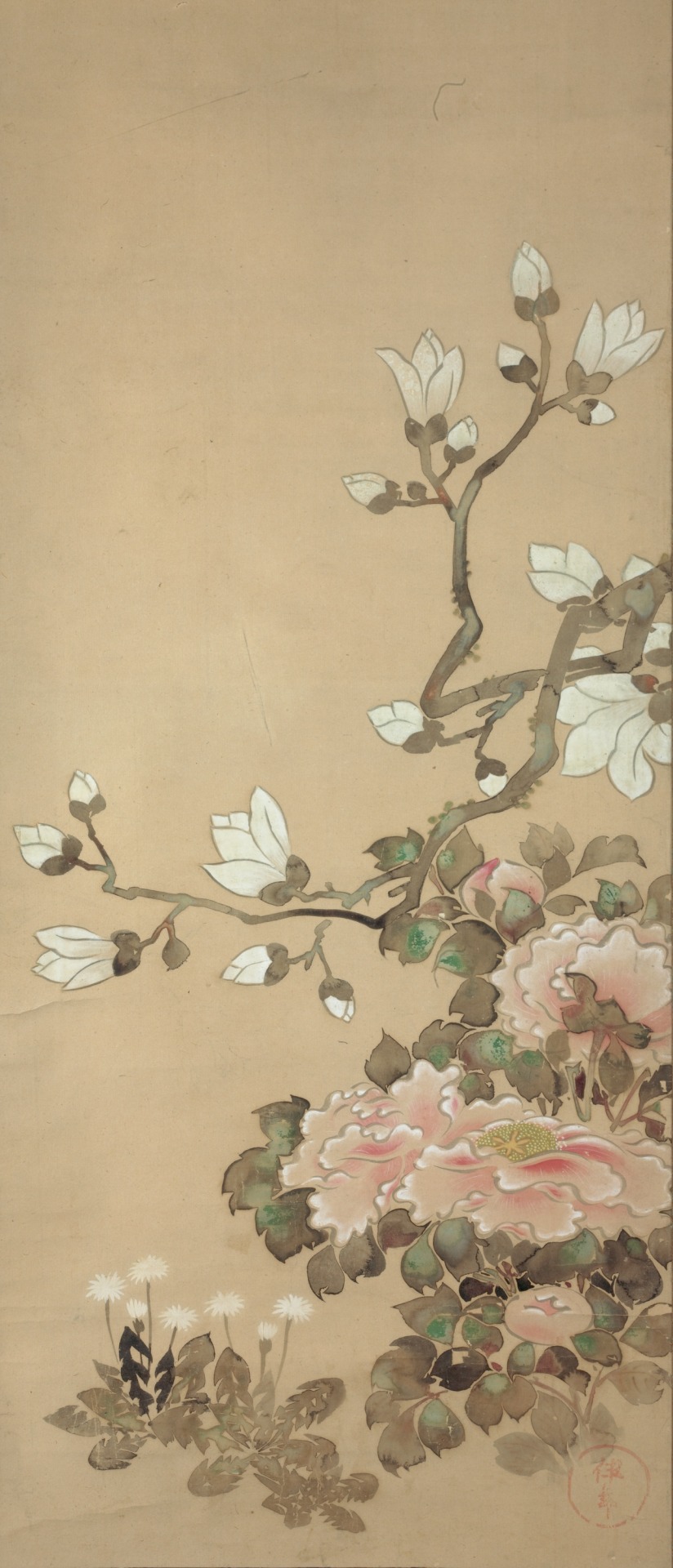
Peonies, Magnolia, and Dandelions by School of Tawaraya Sôtatsu (Japanese, active 18th century).
Ink and colours on paper.
Image and text information courtesy Art Institute Chicago.
60 notes
·
View notes
Photo

Waka poems (Shikishi), pictures of flowers and grasses of the Four Seasons, Tawaraya Sôtatsu, painter, Hon'ami Kôetsu, calligraph. Edo, ca. 1610. Japan. Museum für Asiatische Kunst der Staatlichen Museen zu Berlin, Photo: Jürgen Liepe
7 notes
·
View notes
Text
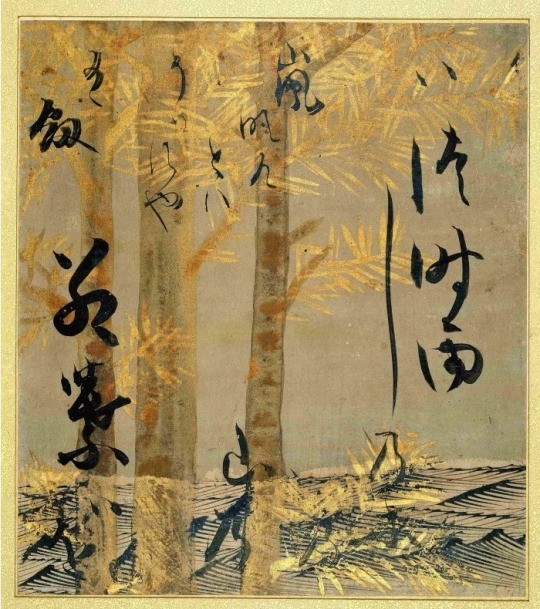
Tawaraya Sôtatsu, painter, Hon'ami Kôetsu, calligraph. Edo, ca. 1610. Japan.
via age-of-wisdom-1111
0 notes
Photo
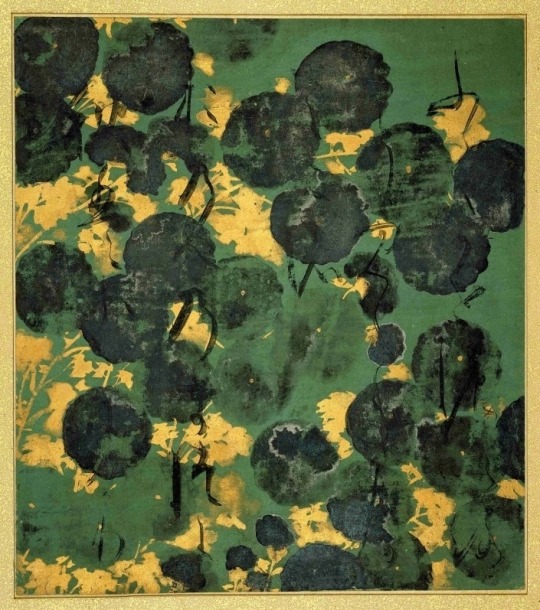

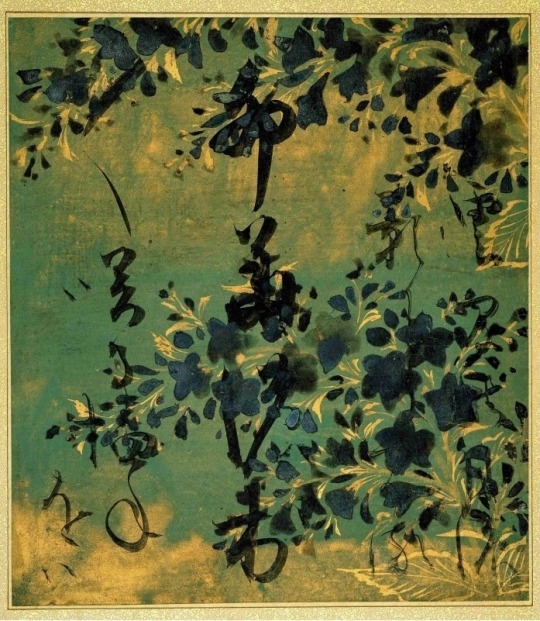
Waka poems (Shikishi), pictures of flowers and grasses of the Four Seasons, Tawaraya Sôtatsu, painter, Hon'ami Kôetsu, calligraph. Edo, ca. 1610. Japan. Museum für Asiatische Kunst der Staatlichen Museen zu Berlin, Photo: Jürgen Liepe.
15 notes
·
View notes
Photo
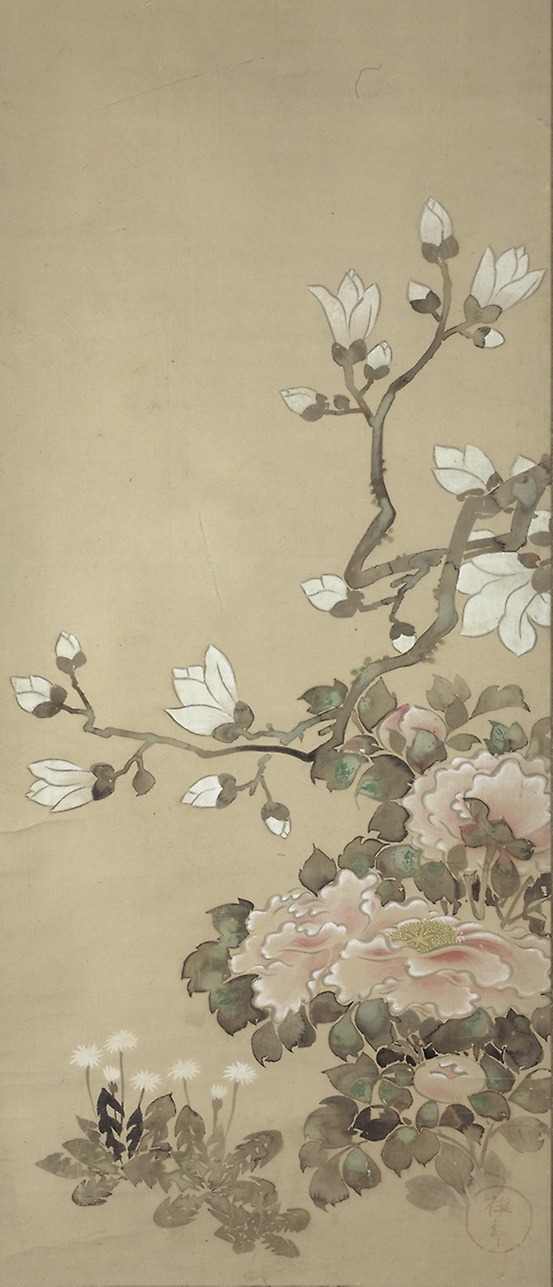
Peonies, Magnolia, and Dandelions, Tawaraya Sôtatsu, Art Institute of Chicago: Asian Art
Frederick W. Gookin Collection
Size: Painting: 115.9 x 49.7 cm (45 5/8 x 19 9/16 in.); 202.6 x 62.9 cm (with mounting) (79 3/4 x 24 3/4 in.); 202.6 x 68.6 cm (with knobs) (79 3/4 x 27 in.)
Medium: Hanging scroll; ink and colors on paper
https://www.artic.edu/artworks/35620/
26 notes
·
View notes
Photo
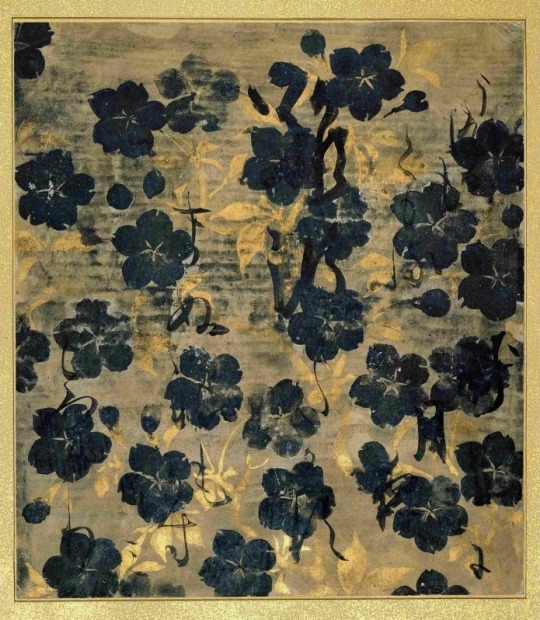
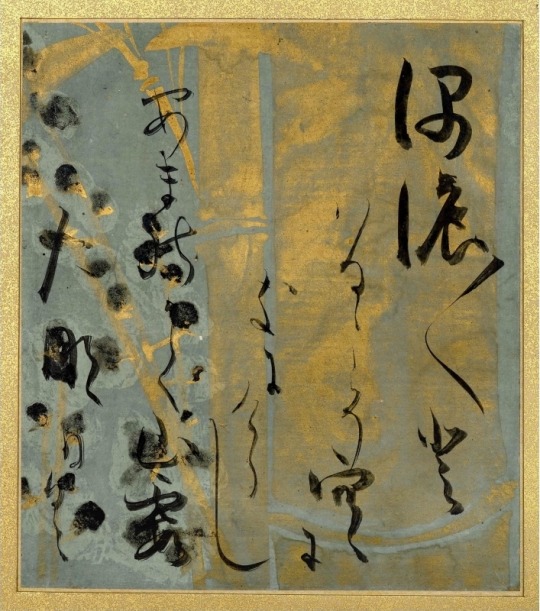

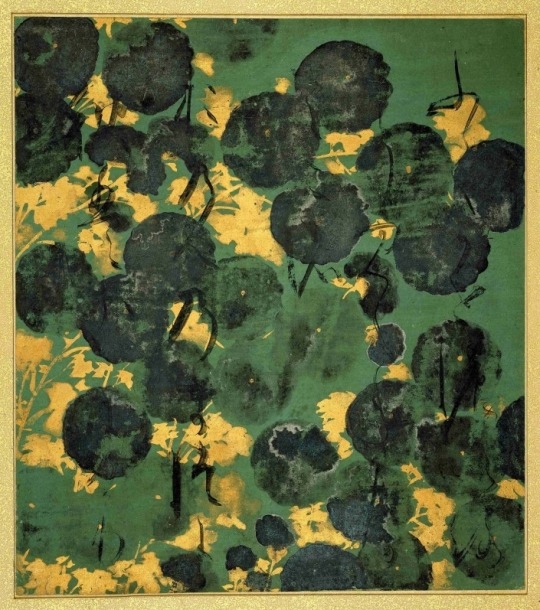
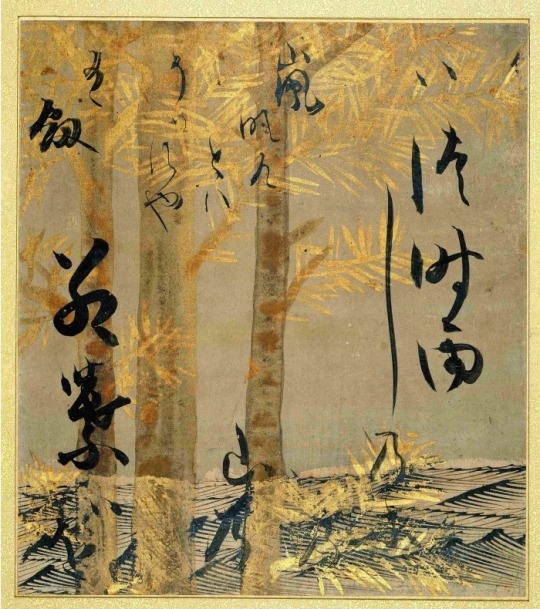
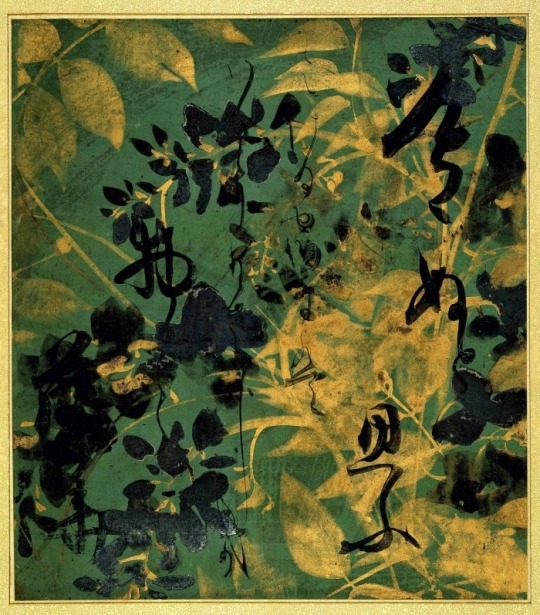
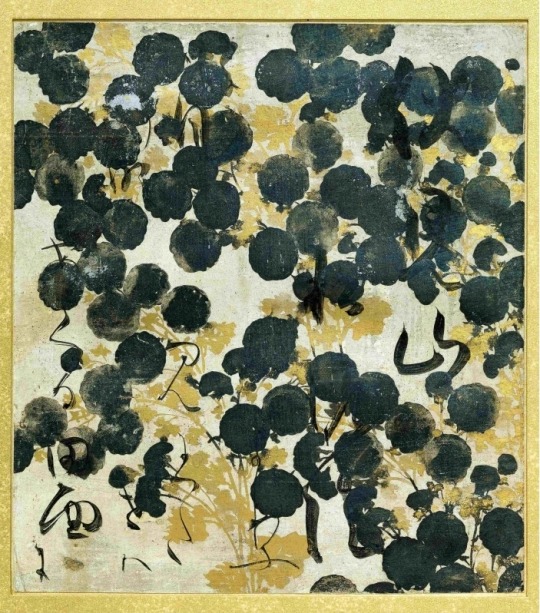

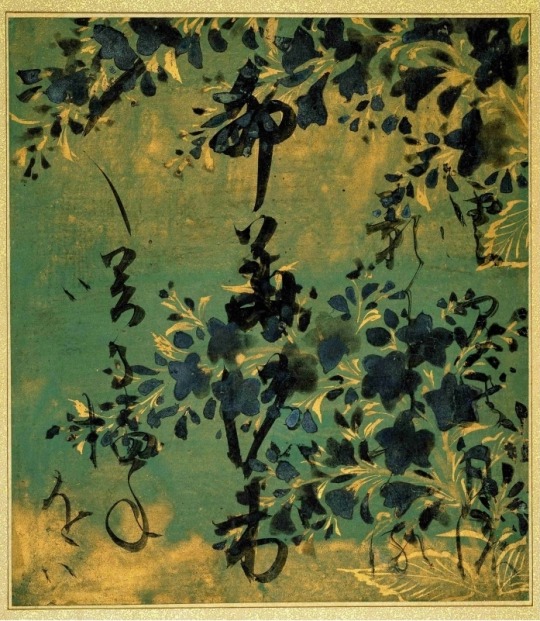
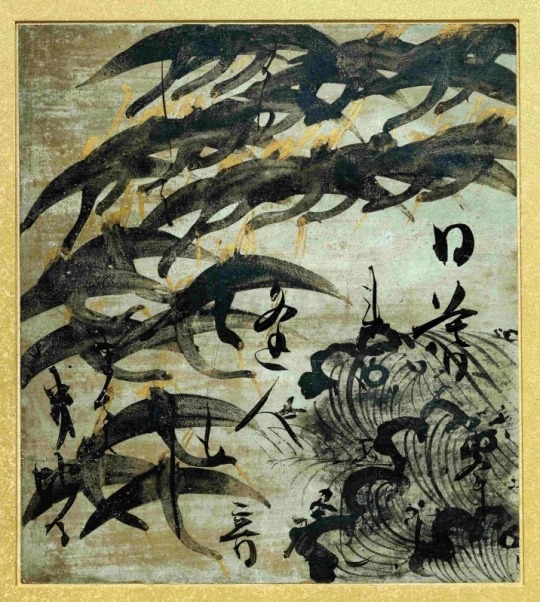
Waka poems (Shikishi), poem cards, pictures of flowers and grasses of the Four Seasons, Tawaraya Sôtatsu, painter, Hon'ami Kôetsu, calligraph. Edo, ca. 1610. Japan. Museum für Asiatische Kunst der Staatlichen Museen zu Berlin, Photo: Jürgen Liepe
2K notes
·
View notes
Photo
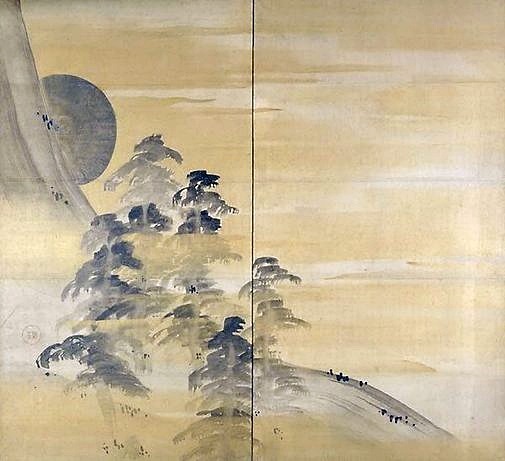
Título: Luna llena sobre montaña cubierta de pinos, siglo 18
Artista: Watanabe SHIKÔ (Japón, 1683 - 1755)
Acerca de
Nada podría ser más revelador de la estética japonesa única que la misteriosa poesía de esta pantalla, tan abreviada en su entrega como satisfactoria en su efecto. Watanabe Shikô pertenecía a la escuela de pintura japonesa Rinpa, llamada así por Ogata Kôrin (1658-1716) con quien Shikô estudió. Los orígenes de la escuela se remontan a finales del siglo XVI y principios del XVII, cuando los artistas Tawaraya Sôtatsu y Hon'ami Kôetsu intentaron restablecer el estilo brillante y la sensibilidad única del arte aristocrático de la 'edad de oro' de Japón, el período Heian ( 794-1184). Los sellos distintivos de la escuela Rinpa son un efecto decorativo rico pero refinado, logrado a través de un equilibrio compositivo impecable; afición a los lavados e incrustaciones metálicas; y un énfasis en la naturaleza. Aquí la luna llena de otoño se asoma desde la ladera de la montaña,
Art Gallery Handbook, 1999. pág. 278.
Detalles:
Lugar donde se realizó el trabajo: Japón
Período: Período Edo (Tokugawa) 1615-1868 → Japón
Fecha: siglo 18
Categoría de medios: Pintura
Materiales usados: sola pantalla de dos paneles; tinta, oro y plata sobre papel
Dimensiones: Imagen de 168.0 x 184.0 cm; Pantalla de 172,5 x 188,4 cm
Fecha de firma:
Firmado ll, en japonés, tinta "[sello del artista]". Sin fecha [pantalla izquierda]
Firmado lr, en japonés, tinta "[sello del artista]". Sin fecha [pantalla derecha]
Crédito: Comprado con fondos provistos por Kenneth Myer 1990, Art Gallery NSW
Información del museo.
0 notes
Photo
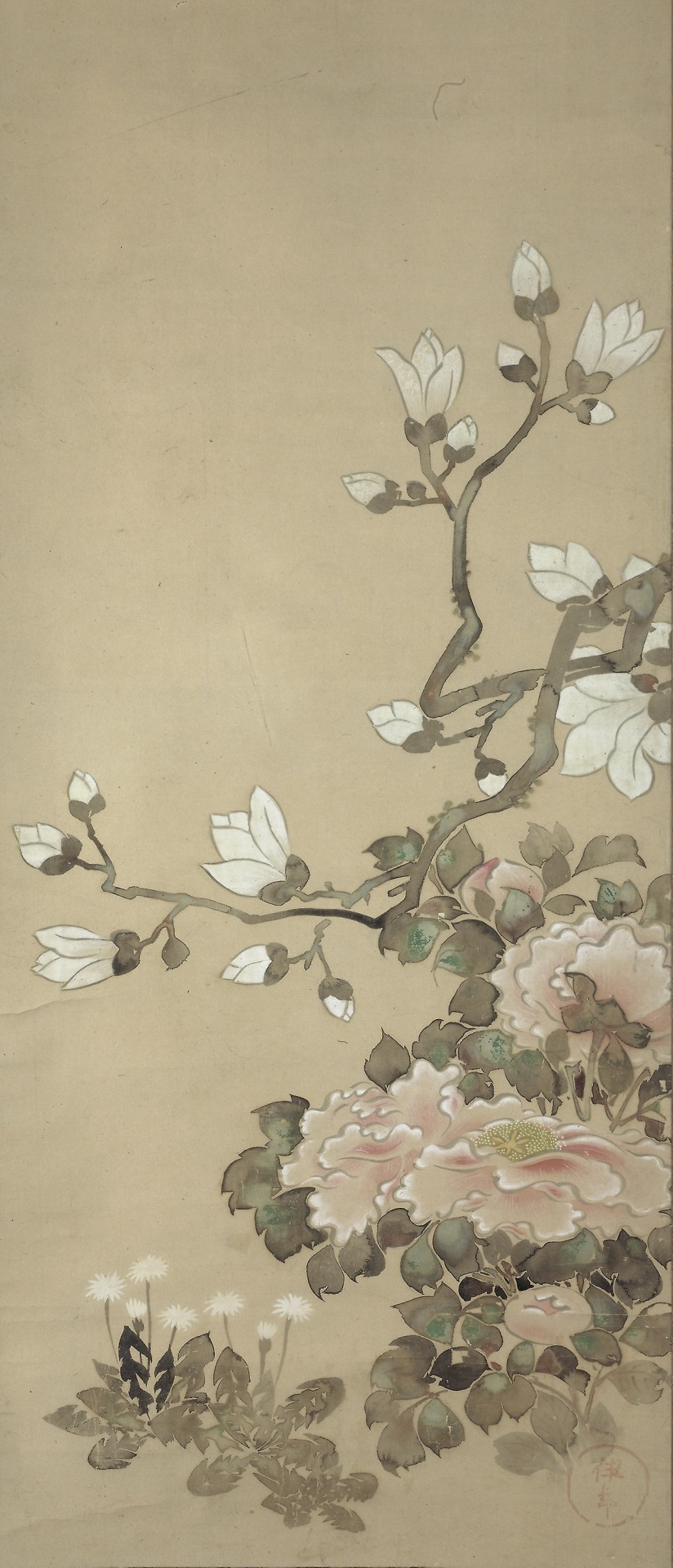
‘Peonies, Magnolia, and Dandelions.’
School of Tawaraya Sôtatsu (Japanese, active 18th century).
Silk painting.
Image and text information courtesy Art Institute Chicago.
95 notes
·
View notes
Photo

Waka poems (Shikishi), pictures of flowers and grasses of the Four Seasons, Tawaraya Sôtatsu, painter, Hon'ami Kôetsu, calligraph. Edo, ca. 1610. Japan. Museum für Asiatische Kunst der Staatlichen Museen zu Berlin, Photo: Jürgen Liepe
1 note
·
View note
Photo
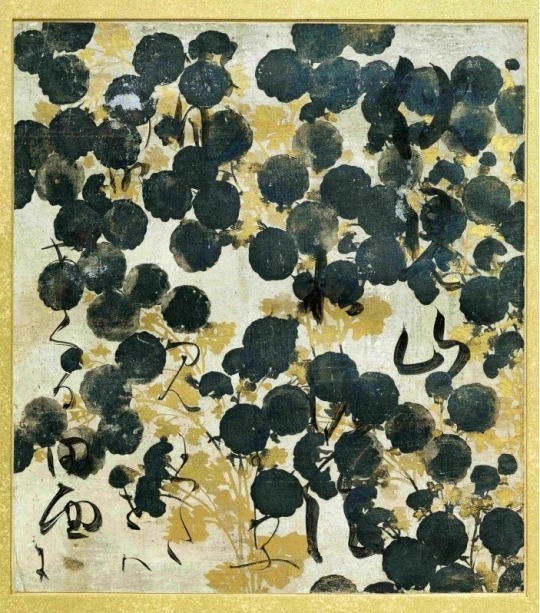
Waka poems
Waka poems (Shikishi), pictures of flowers and grasses of the Four Seasons, Tawaraya Sôtatsu, painter, Hon'ami Kôetsu, calligraph. Edo, ca. 1610. Japan. Museum für Asiatische Kunst der Staatlichen Museen zu Berlin, Photo: Jürgen Liepe
1 note
·
View note
Photo
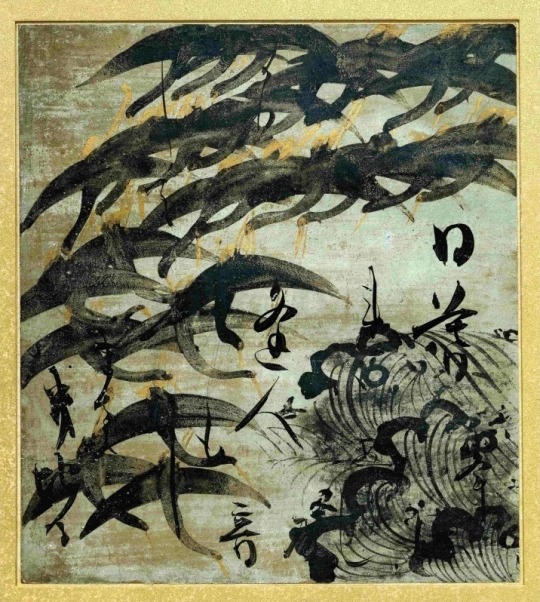

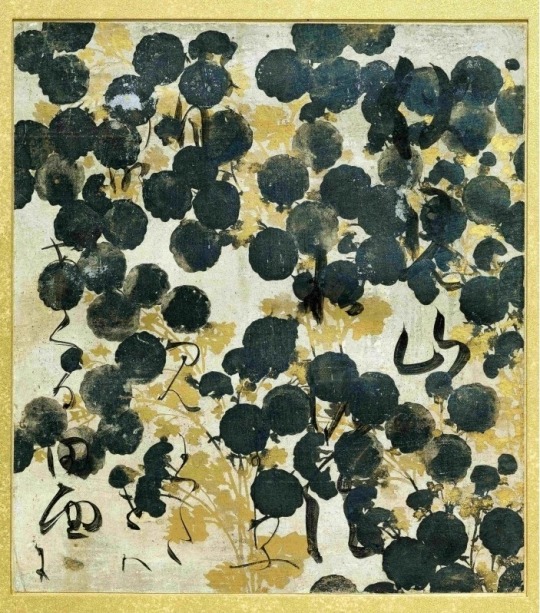
Waka poems (Shikishi), pictures of flowers and grasses of the Four Seasons, Tawaraya Sôtatsu, painter, Hon'ami Kôetsu, calligraph. Edo, ca. 1610. Japan. Museum für Asiatische Kunst der Staatlichen Museen zu Berlin, Photo: Jürgen Liepe.
14 notes
·
View notes
Photo
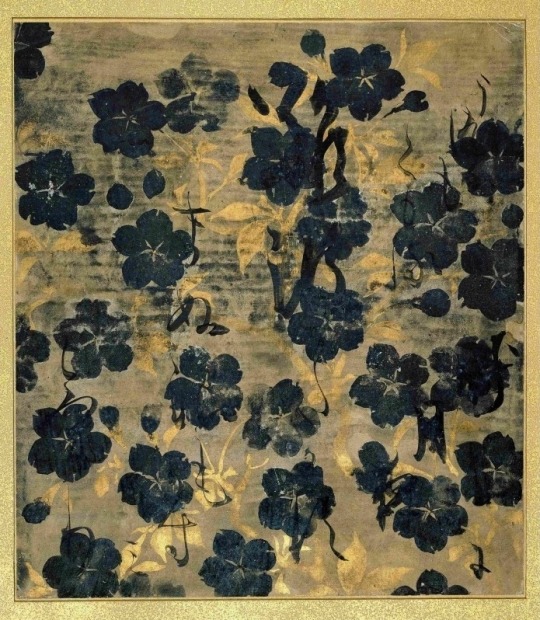

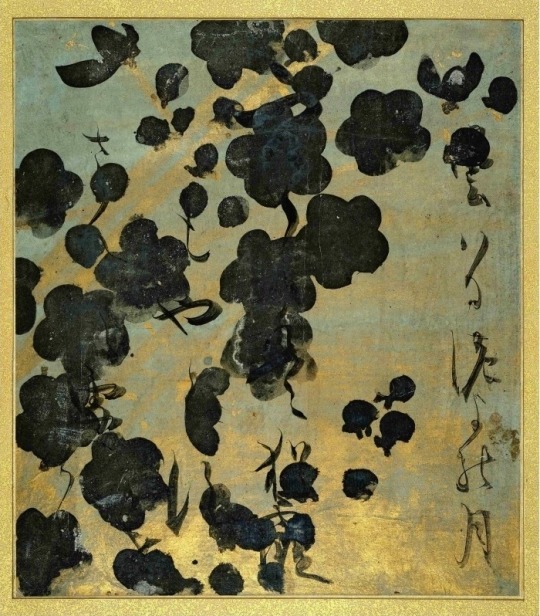
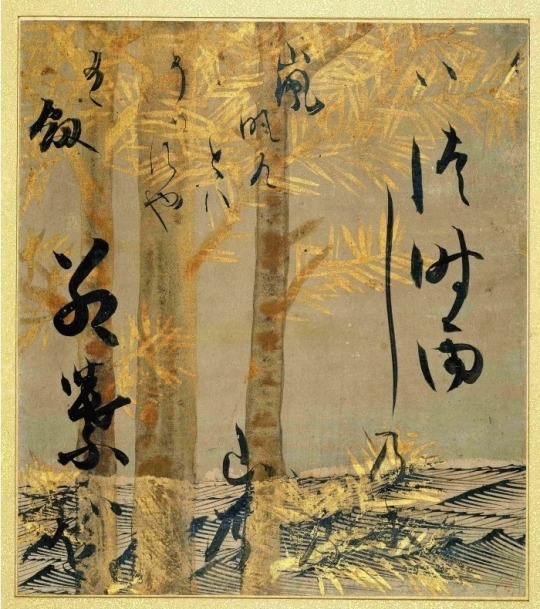
Waka poems (Shikishi), pictures of flowers and grasses of the Four Seasons, Tawaraya Sôtatsu, painter, Hon'ami Kôetsu, calligraph. Edo, ca. 1610. Japan. Museum für Asiatische Kunst der Staatlichen Museen zu Berlin, Photo: Jürgen Liepe.
14 notes
·
View notes
Photo
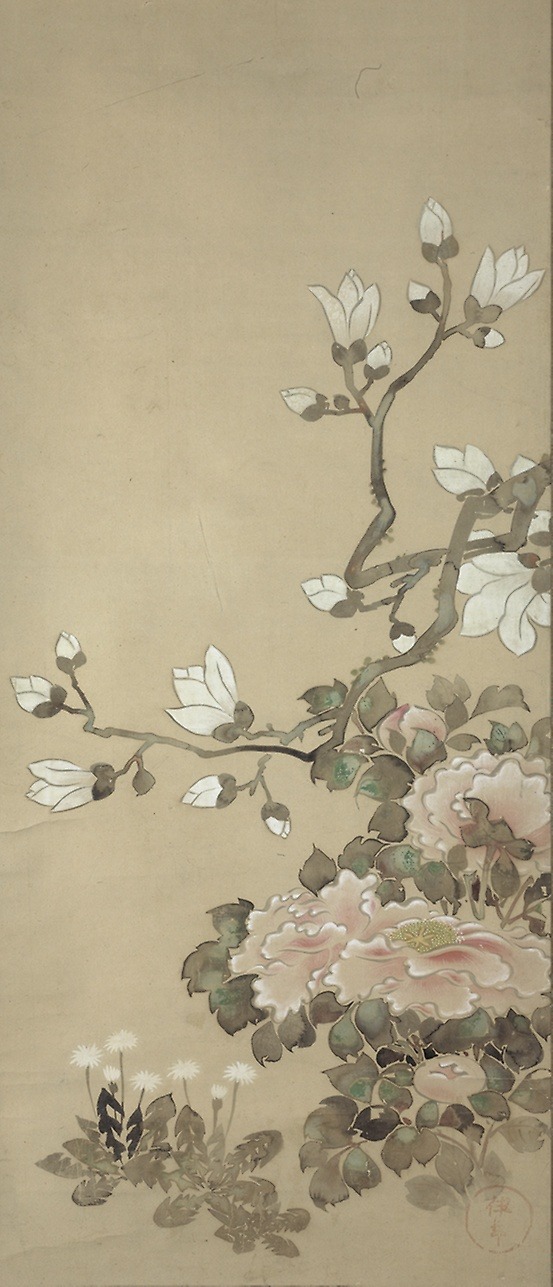
Peonies, Magnolia, and Dandelions, Tawaraya Sôtatsu, Art Institute of Chicago: Asian Art
Frederick W. Gookin Collection
Size: Painting: 115.9 x 49.7 cm (45 5/8 x 19 9/16 in.); 202.6 x 62.9 cm (with mounting) (79 3/4 x 24 3/4 in.); 202.6 x 68.6 cm (with knobs) (79 3/4 x 27 in.)
Medium: Hanging scroll; ink and colors on paper
https://www.artic.edu/artworks/35620/
33 notes
·
View notes
Photo

Maize and Cockscombs, Tawaraya Sôtatsu, 1625, Art Institute of Chicago: Asian Art
During the Edo period, the prosperity and political unification of Japan under the ruling Tokugawa shoguns led to the emergence of a magnificent Japanese decorative style characterized by a love of bold patterns and bright colors. This new style was supported by the military class, a disenfranchised aristocracy, and a thriving class of merchants and entrepreneurs. The surviving half of an original pair, this splendid screen elegantly embodies both the techniques of ancient court painters and the curiosity and confidence so prevalent in the Edo period. Bursting with sensual fullness, the maize and cockscombs are rendered with the accuracy of a botanical drawing, a testimony to the era’s interest in natural science. The appearance of maize, a grain not native to Japan, indicates a willingness to assimilate new subject matter on the part of Edo artists and patrons. Kate S. Buckingham Endowment
Size: 170.2 × 357 cm (67 in × 140 1/2 in.)
Medium: Six-panel screen; ink, color, and gold on paper
https://www.artic.edu/artworks/11272/
5 notes
·
View notes
Photo

waka poems
Waka poems (Shikishi), pictures of flowers and grasses of the Four Seasons, Tawaraya Sôtatsu, painter, Hon'ami Kôetsu, calligraph. Edo, ca. 1610. Japan. Museum für Asiatische Kunst der Staatlichen Museen zu Berlin, Photo: Jürgen Liepe
3 notes
·
View notes
